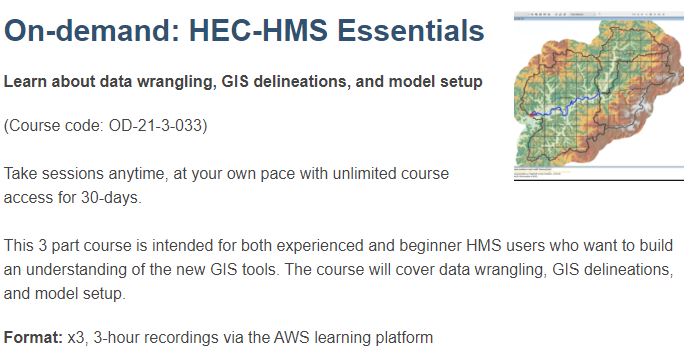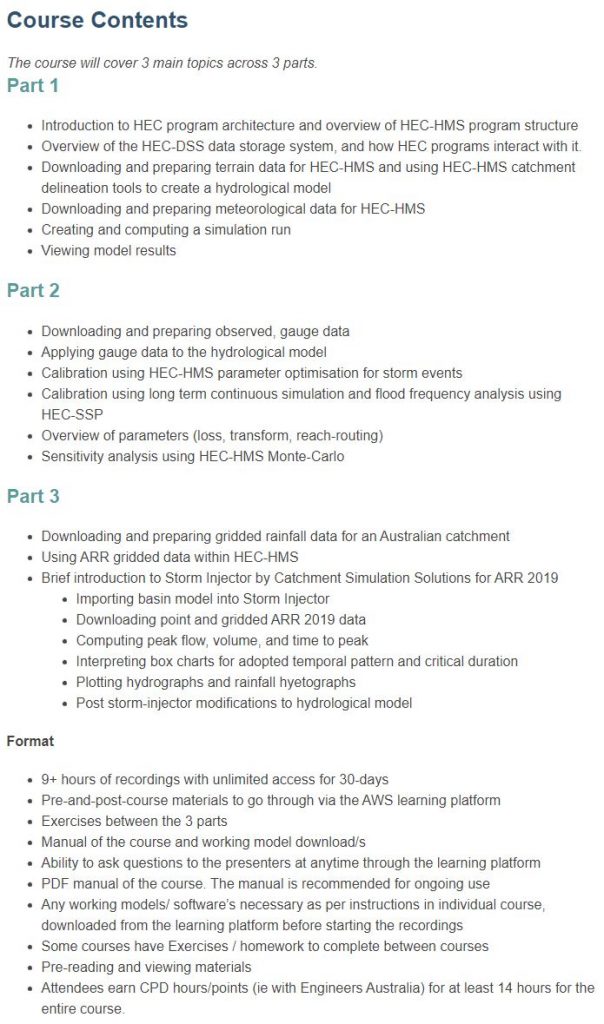HEC-HMS
Our next live, in-person HEC-HMS course takes place in May 2024 in Brisbane. Click here for further details.
HEC-HMS training is currently available on-demand, with units available to complete at your own pace.
Use coupon code “hydroschool-10” at checkout to receive a 10% discount on all on-demand training courses
We currently offer customised training in HEC-HMS. To request details or a training proposal for HEC-HMS, please submit our request form here.
About HEC-HMS
HEC-HMS is a public domain hydrologic modelling software application developed by the U.S. Army Corps of Engineers Hydrologic Engineering Center. Following are some downloads and links relevant to HEC-HMS:
Version 4.10 includes some powerful new GIS features and other additions.
From the U.S. Army Corps of Engineers website:
The Hydrologic Modeling System (HEC-HMS) is designed to simulate the complete hydrologic processes of dendritic watershed systems. The software includes many traditional hydrologic analysis procedures such as event infiltration, unit hydrographs, and hydrologic routing. HEC-HMS also includes procedures necessary for continuous simulation including evapo-transpiration, snowmelt, and soil moisture accounting. Advanced capabilities are also provided for gridded runoff simulation using the linear quasi-distributed runoff transform (ModClark). Supplemental analysis tools are provided for model optimization, forecasting streamflow, depth-area reduction, assessing model uncertainty, erosion and sediment transport, and water quality.
The software features a completely integrated work environment including a database, data entry utilities, computation engine, and results reporting tools. A graphical user interface allows the user seamless movement between the different parts of the software. Simulation results are stored in HEC-DSS (Data Storage System) and can be used in conjunction with other software for studies of water availability, urban drainage, flow forecasting, future urbanization impact, reservoir spillway design, flood damage reduction, floodplain regulation, and systems operation.



